How to Stop Going Back to a Toxic Relationship: A Comprehensive Guide
| Recognizing the Signs of a Toxic Relationship | Understanding the Psychology Behind Returning to Toxic Relationships | Strategies to Break the Cycle |
| Overcoming Relapse and Temptations | FAQs |
Key Takeaways:
- Recognizing the signs of a toxic relationship is crucial for breaking the cycle.
- Understanding the psychological reasons for returning to toxic relationships can aid in developing effective strategies.
- Implementing boundaries, seeking therapy, and practicing self-care are essential steps in breaking the cycle.
- Overcoming relapse requires recognizing triggers, developing coping mechanisms, and rebuilding self-trust.
Recognizing the Signs of a Toxic Relationship
In any relationship, it’s important to recognize when things aren’t healthy. Toxic relationships can take a toll on your mental and emotional well-being, but sometimes, it’s not easy to identify the signs. Here are some key indicators:
Identifying Emotional Manipulation
One of the most common signs of a toxic relationship is emotional manipulation. This can include guilt-tripping, gaslighting, and playing mind games. If you constantly feel like you’re walking on eggshells around your partner or you find yourself questioning your own sanity, these could be red flags.
Understanding Patterns of Control
Control is another hallmark of toxicity. Whether it’s financial control, monitoring your whereabouts, or dictating who you can spend time with, controlling behavior is a major warning sign. Healthy relationships thrive on trust and mutual respect, not control.
Recognizing Verbal and Emotional Abuse
Verbal and emotional abuse can be subtle but incredibly damaging. This can include insults, belittling comments, and threats. If your partner’s words consistently make you feel worthless or ashamed, it’s important to recognize this as abuse.
Physical Signs of Toxicity
In some cases, toxicity can escalate to physical abuse. Consequently, this behavior is never acceptable and should never be tolerated. If you’re experiencing any form of physical violence or intimidation, it’s crucial to seek help immediately.

Understanding the Psychology Behind Returning to Toxic Relationships
Even when we know a relationship is toxic, it can be incredibly difficult to break away. Understanding the psychological reasons behind this pattern of behavior can help us address it effectively.
Fear of Loneliness and Abandonment
One of the biggest reasons people return to toxic relationships is the fear of being alone. This fear can be paralyzing, causing individuals to stay in harmful situations out of desperation for companionship.
Low Self-Esteem and Worthiness Issues
Having low self-esteem and feeling unworthy can significantly hinder one’s ability to break free from toxic relationships. Individuals often convince themselves that they don’t deserve better or that they’ll never find someone else who will love them, perpetuating the cycle of returning to toxicity. Learning how to stop going back to a toxic relationship involves addressing these deep-rooted beliefs and building self-worth.
Familiarity and Comfort in Dysfunction
For some people, toxicity becomes familiar and strangely comfortable. They may have grown up in dysfunctional environments or witnessed toxic relationships modeled by their parents. As a result, they may struggle to recognize healthier alternatives.
Trauma Bonding and Stockholm Syndrome
Trauma bonding occurs when intense, emotional experiences create a strong bond between two people, even if those experiences are harmful. This bond can be difficult to break, leading individuals to stay in toxic relationships despite knowing they’re unhealthy.

Strategies to Break the Cycle
Breaking the cycle of returning to a toxic relationship requires intentional effort and strategies to reclaim your well-being.
Setting Boundaries and Sticking to Them
Setting clear boundaries is essential for protecting yourself in any relationship. Communicate your needs and expectations to your partner, and be firm in enforcing boundaries when they’re crossed. Remember, boundaries are not meant to be negotiable.
Seeking Therapy and Professional Help
Therapy can be a valuable tool for healing from the trauma of a toxic relationship. A therapist can provide support, guidance, and coping strategies to help you break free from unhealthy patterns and rebuild your self-esteem.
Building a Support System
Ensure you surround yourself with friends, family, and loved ones who uplift and support you. Additionally, having a strong support system can provide invaluable encouragement, validation, and perspective as you navigate the challenging process of breaking free from toxicity.
Practicing Self-Care and Self-Love
Self-care is crucial for your physical, emotional, and mental well-being. Make time for activities that bring you joy, relaxation, and fulfillment. Practice self-love by affirming your worthiness and prioritizing your needs.

Overcoming Relapse and Temptations
Even after making the decision to leave a toxic relationship, the temptation to return can be strong. Here are some strategies for staying strong and avoiding relapse:
Recognizing Triggers and Vulnerabilities
Be mindful of the triggers that lead you back to toxic relationships, understanding how to stop going back to a toxic relationship. Whether it’s loneliness, stress, or feelings of unworthiness, recognizing your vulnerabilities can help you anticipate and proactively address them.
Developing Coping Mechanisms
Developing healthy coping mechanisms for dealing with difficult emotions and situations is essential. Firstly, consider incorporating mindfulness practices, such as meditation or deep breathing exercises. Additionally, journaling can be a helpful tool for processing emotions and gaining clarity. Moreover, seeking support from your network of friends, family, or a therapist can provide valuable perspective and guidance. Ultimately, finding what works best for you and prioritizing self-care are crucial steps in breaking free from toxic relationship patterns.
Rebuilding Self-Trust and Confidence
Rebuilding self-trust and confidence takes time and patience. Be gentle with yourself as you work through the healing process. Celebrate your progress and accomplishments, no matter how small, and remind yourself of your worthiness.

Frequently Asked Questions
How do I know if my relationship is toxic?
Recognizing the signs of a toxic relationship, which is crucial for understanding how to stop going back to a toxic relationship, involves paying close attention to patterns of control, manipulation, and abuse. Trust your instincts and seek support if you’re unsure about the dynamics of your relationship.
Can a toxic relationship be fixed?
While it’s possible for some toxic relationships to improve with therapy and effort from both parties, prioritizing your safety and well-being is paramount. Recognize when it’s best to end a consistently harmful relationship to stop going back to toxicity.
How do I break the cycle of going back to a toxic ex?
Breaking the cycle involves setting boundaries, seeking therapy, building a support system, and practicing self-care. It’s also important to address the underlying psychological factors that contribute to the pattern.
Is it possible to heal from the trauma of a toxic relationship?
Yes, healing from the trauma of a toxic relationship is possible with time, support, and professional help. Therapy, self-care, and surrounding yourself with positive influences can aid in the healing process.
What are some red flags to watch out for in a toxic relationship?
Red flags in a toxic relationship, indicating signs of how to stop going back to a toxic relationship, include emotional manipulation, control, verbal and emotional abuse, and physical violence. Trust your instincts and prioritize your safety.
Conclusion
Breaking the cycle of returning to a toxic relationship is a challenging journey, but it’s essential for your mental, emotional, and physical well-being. By recognizing the signs of toxicity and understanding the psychological reasons for returning, you can take proactive steps on how to stop going back to a toxic relationship. Implementing strategies to break the cycle allows you to reclaim your power and build healthier relationships. Remember to prioritize self-care, seek support from loved ones and professionals, and be patient with yourself as you navigate the healing process.
Additional Resources
If you’re struggling to break free from a toxic relationship or need additional support, consider reaching out to the following resources:
- National Domestic Violence Hotline: 1-800-799-SAFE (7233)
- Therapy and Counseling Services
- Support Groups for Survivors of Abuse
- Books and Articles on Healing from Toxic Relationships
Remember, you are not alone, and there is help available to support you on your journey to healing and empowerment.








Leave a Comment